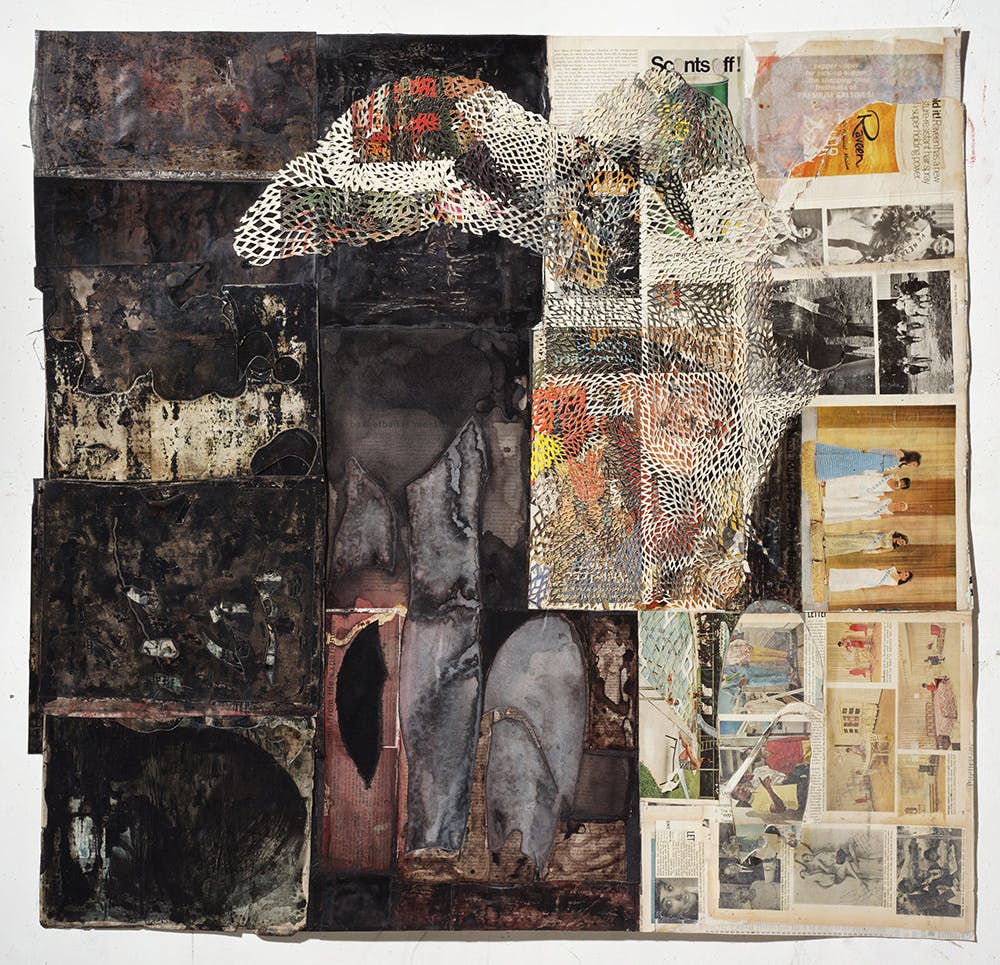Purvis Young
(1943–2010)Purvis Young’s practice centered on recurring motifs—angels, ancestors, refugees, prisoners, and soldiers from his immediate environment and the histories of those around him.
Biography
Purvis Young grew up in the Overtown neighborhood of Miami, and learned how to draw from his uncle during his childhood. As a teenager, he was incarcerated for three years at Raiford Prison. During that time, he rediscovered his childhood passion for drawing through the art books available to him in the prison’s library.
Upon his release, he studied works by Rembrandt, Gaugin, Van Gogh, and Cezanne, and created thousands of small drawings. He also found inspiration in mural movements in Detroit and Chicago as well as Vietnam War demonstrations.
Beginning in the 1970s, Young began to paint on discarded pieces of plywood, nailing them to boarded up storefronts to create a mural-effect. He drew recurring motifs—angels, ancestors, refugees, prisoners, and soldiers from his immediate environment and the histories of those around him. While some pieces of his murals occasionally disappeared, Young saw this as part of the process: “I knowed when I was making the art that one day it was going to go. Nothing’s going to last forever.”1 His installations received media attention and art world acclaim and, subsequently, Young’s work appeared in local libraries and galleries. They also gained him the attention of Bernard Davis, owner of the Miami Museum of Modern Art, who went on to become Young’s patron. The artist continued to create murals in the 1990s and 2000s, finding inspiration in and sourcing content from the Great Depression, war, and politics.
While Young’s career as a professional artist sustained his life, he continued to live near to the streets of Miami he depicted in his work. Following years of health difficulties, he passed away in 2010. His work first entered the Studio Museum’s collection in 2008.
1 “Purvis Young,” Souls Grown Deep, accessed January 6, 2023, soulsgrowndeep.org/artist/purvis-young.
Exhibitions and Events
Purvis Young
(1943–2010)Purvis Young’s practice centered on recurring motifs—angels, ancestors, refugees, prisoners, and soldiers from his immediate environment and the histories of those around him.
Biography
Purvis Young grew up in the Overtown neighborhood of Miami, and learned how to draw from his uncle during his childhood. As a teenager, he was incarcerated for three years at Raiford Prison. During that time, he rediscovered his childhood passion for drawing through the art books available to him in the prison’s library.
Upon his release, he studied works by Rembrandt, Gaugin, Van Gogh, and Cezanne, and created thousands of small drawings. He also found inspiration in mural movements in Detroit and Chicago as well as Vietnam War demonstrations.
Beginning in the 1970s, Young began to paint on discarded pieces of plywood, nailing them to boarded up storefronts to create a mural-effect. He drew recurring motifs—angels, ancestors, refugees, prisoners, and soldiers from his immediate environment and the histories of those around him. While some pieces of his murals occasionally disappeared, Young saw this as part of the process: “I knowed when I was making the art that one day it was going to go. Nothing’s going to last forever.”1 His installations received media attention and art world acclaim and, subsequently, Young’s work appeared in local libraries and galleries. They also gained him the attention of Bernard Davis, owner of the Miami Museum of Modern Art, who went on to become Young’s patron. The artist continued to create murals in the 1990s and 2000s, finding inspiration in and sourcing content from the Great Depression, war, and politics.
While Young’s career as a professional artist sustained his life, he continued to live near to the streets of Miami he depicted in his work. Following years of health difficulties, he passed away in 2010. His work first entered the Studio Museum’s collection in 2008.
1 “Purvis Young,” Souls Grown Deep, accessed January 6, 2023, soulsgrowndeep.org/artist/purvis-young.
